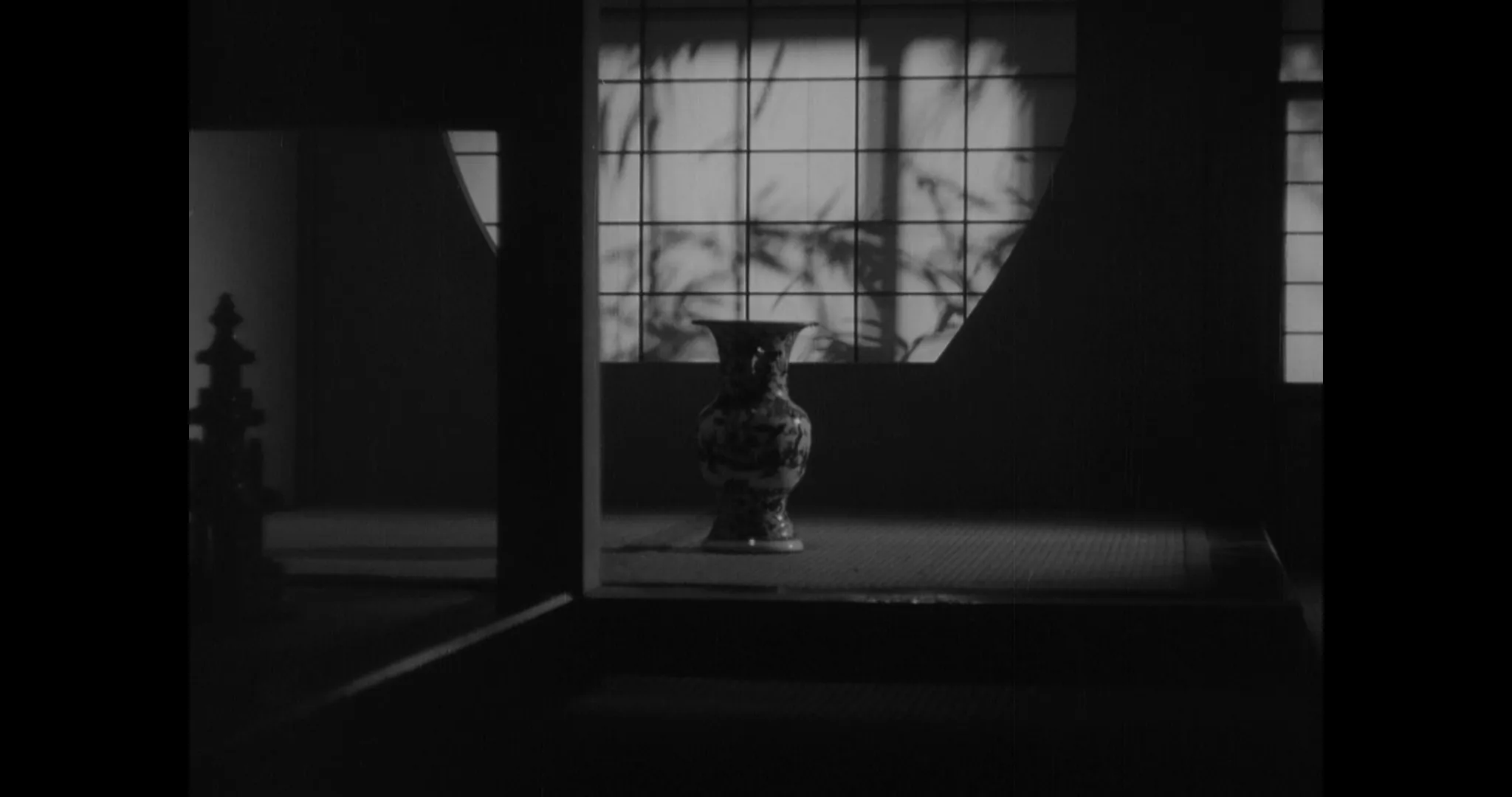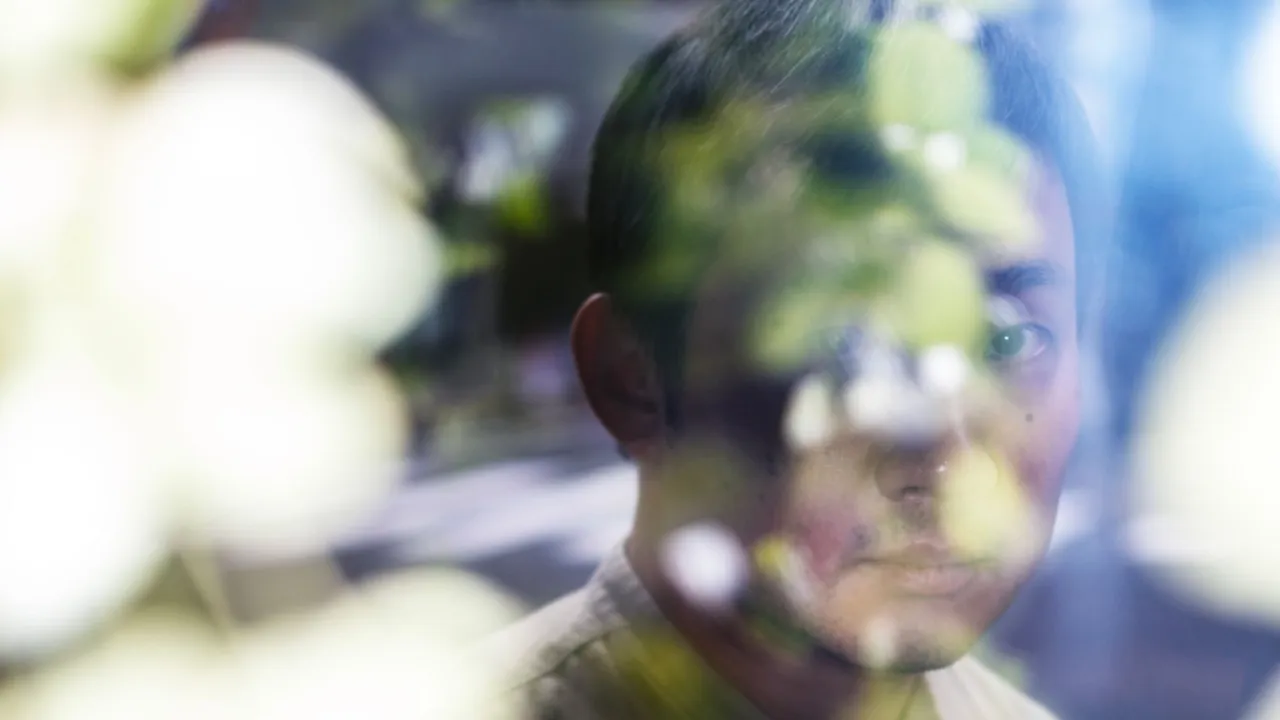Please update your browser
Your current browser version is outdated. We recommend updating to the latest version for an improved and secure browsing experience.

Ozu and the Mysteries of the Vase

Montage and Traditional Aesthetics in the 1940s
In their “still life” montages, Fei Mu’s Spring in a Small Town (1948, left) and Yasujirō Ozu’s Late Spring (1949, below) - two of the greatest films from the 1945-1949 period depicted in A City of Sadness (Hou Hsiao-hsien, 1989, below) - provide apposite comparisons with the Classical Hollywood model.
Orchestrated paratactically, the most enigmatic scene in Spring in a Small Town begins with shots of the moon in the heavens, blowing wind, and moving feet. The forbidden feelings of the couple are symbolized after they enter the house by a brief shot of an orchid, which covers over the gap separating the woman lighting a cigarette and the man lifting her up. Fei’s orchid is contextually grounded (it is brought into the room in an earlier scene), but its status as a self-consciously poetic cutaway gives it a very different charge.
The empty moonlit vase in Ozu’s Late Spring is instead inserted within a network of shots and countershots between a father and his daughter. Despite the repeated cuts from the vase to the daughter’s face, however, it does not actually “match” the direction of her glance. Rather than functioning as a point of view shot, the vase (unseen, but presumably present in the alcove, for the rest of the scene) acts as a mental interruption, what director Kijū Yoshida has called “an image of purification and redemption” blocking potentially uncomfortable emotions. [1]
Reinforcing this interpretation, the rigorously composed shot, with shades of darkness redolent of the traditional Japanese aesthetics embraced by Jun'ichirō Tanizaki’s In Praise of Shadows (1933), is linked by a cut to the Zen garden at Ryōanji. [2] Characteristically for Ozu, this culturally loaded association is counterbalanced by the sound of the father’s snoring.
Hou’s vase shares with Ozu’s ties to domesticity, generational passage, and the everydayness exemplified, in A City of Sadness, by the preceding scene of the Li family meal. Also like Late Spring, the final shot of A City of Sadness is distinguished by its spatial geometry: the colored panes in the shrine harmonize with similar objects in the back left and back right as well as with the divided screens on the sides, which produces a seemingly contradictory impression of containment and expansiveness.
The shot is equally notable for its focus on gradations of light, from the clearly positioned overhead lamps on the left to the partial illumination of the shrine to the flickering light in the back. That flickering light brings the film full circle, pointedly reminding the viewer of the multiple births – of the child Kang-ming (“Light”) and of a fledgling nation – in the opening scene, allowing the vase to suggest cyclicity as well as endurance.



Hou Hsiao-hsien's Montage Style
What Hou gleaned from his predecessors was the confidence to continually reinvent the parameters of realism, discovering a film’s form in the process of making it. The fruitfulness of his inclinations is amply demonstrated by the increasingly original form of editing developed with long-term associate Liao Ching-sung (their decades-long collaboration is matched in modern cinema only by Martin Scorsese and Thelma Schoonmaker). Liao, who has described Hou as a Taoist on several occasions, has argued that “the poetic spirit of Chinese literature is contained in [his shots].”
The Green, Green Grass of Home (1982), Hou’s last studio assignment and final anamorphic film, includes a wedding ceremony whose fantasy status is indicated, conventionally enough, by a zoom and a dissolve. One year later, the sepia-tinged interlude in the early New Cinema film Growing Up (1983) - co-written by Hou and edited by Liao - is framed by an image of a train. Flashbacks are similarly bracketed by shots of the protagonist’s face in Son’s Big Doll (1983).
With The Boys from Fengkuei (1983, left), however, Hou’s approach changes. Reinflecting the strategies of the earlier films, he commingles past and present, layering space and time by introducing the protagonist’s reminiscence of his dead father within a continuous panning movement and closing it with a countershot from the present. Comparable in affect to the time-shifting long takes of Andrei Tarkovsky’s Mirror (1975), this section of The Boys from Fengkuei sets the stage for increasingly innovative experiments in the films that follow, from the switches into and out of a character’s subjectivity in A Summer at Grandpa’s (1984) and Goodbye South, Goodbye (1996) to the elastic temporality of A City of Sadness and The Puppetmaster (1993).
Even when they are explicitly designated by techniques such as desaturation, Hou’s memory sequences have an equivocal relationship to the main body of the films they appear in. In A City of Sadness, Hou uses the Japanese song “Red Dragonfly” to bridge a series of memories, thereby connecting the perspectives of (Taiwanese) Hinomi, her brother Hinoe, and their Japanese friend Shizuko. Beautifully encapsulating the shared mental space of romance, this surprising montage sequence also suggest that every point of view shot has an array of counterparts and that the historical experience of individuals and nations is constituted by, and can only be understood through, the interaction of these partial views.





